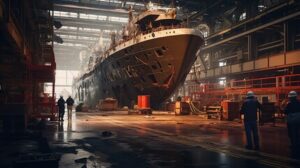Plumbing systems provide fresh water and safely eliminate wastewater, making them crucial to human existence. Plumber Sarasota is responsible for installing, repairing, and maintaining these important fixtures.

Plumbers may need to be on-call for emergencies, which can cause disruptions to personal lives. They also need good communication skills to interact with customers and solve problems effectively.
The plumber is responsible for a variety of tasks including plumbing maintenance, inspections and repairs. This position requires the ability to read and interpret blueprints and engineering drawings as well as mathematical equations and the use of hand and power tools. Other duties include installing and repairing fixtures such as sinks, toilets, bathtubs, water heaters and appliances in residential, commercial and industrial structures. They also install and maintain drainage systems in various locations. Plumbers are often responsible for testing pipe systems and opening clogged drains. They are expected to meet company goals and objectives, and to participate in all staff meetings and training.
Plumbers are required to be licensed journeyman plumbers and must have a minimum of five years experience performing the specific craft function. They are expected to have expert knowledge of craft theory and the ability to select the proper materials for a particular job. Plumbers are also required to have a working knowledge of building codes, regulations and standards.
They are also required to keep a clean and safe work area and to follow all company policies and procedures. They must be available to perform overtime as needed. Plumbers must be able to respond quickly and effectively to any emergency call-back. They must have the ability to read and understand informational data, as well as a strong desire to learn new skills.
Physical requirements for this position include the ability to lift objects weighing up to 50 pounds on a regular basis, as well as climb stairs and ladders and stand or stoop for extended periods of time. In addition, the job requires the ability to work in environments that may be dusty or noisy, and it sometimes involves working outdoors in inclement weather conditions. This position requires the ability to use a variety of hand and power tools, as well as electrical equipment. Additional qualifications include excellent communication and customer service skills, the ability to follow written and verbal instructions and to travel to sites as needed. A valid driver’s license and a reliable vehicle are also necessary for this role.
Education and Training Requirements
Plumbers install and repair the pipes that carry water and other liquids and gases into and out of buildings. They also work on fixtures like toilets, sinks, and bathtubs. They work in cramped spaces and must be comfortable using power tools and working with hazardous materials. Plumbers must also understand building codes and safety regulations.
Becoming a plumber requires training in both classroom and hands-on settings. Most plumbers start their careers with a high school diploma or a GED certificate. Some then enroll in a vocational program at a trade school or community college. They may also take an apprenticeship, which combines on-the-job experience with classroom instruction. Apprentices often receive mentoring from more experienced plumbers, which can speed up their learning curve.
Those interested in becoming plumbers should consider their state’s licensing requirements. Depending on their state, they might need to pass an exam and complete continuing education courses. They might also need to submit proof of experience and pay a fee to get licensed. To find out what the requirements are in their state, prospective plumbers should check with the local licensing board.
In addition to education and training, plumbers must be familiar with the tools of the trade and have good math skills. They should also be comfortable reading blueprints and rough drawings. Having knowledge of different pipe materials, including PVC, CPVC, PEX, and cast iron, is helpful. Plumbers must also stay updated on new plumbing techniques, equipment, and regulations to keep up with the changing industry.
While it’s not necessary, many aspiring plumbers pursue a postsecondary degree or certificate after completing their apprenticeship or vocational training. These degrees can prepare them for more managerial and business-related tasks, and can help them stand out to potential employers. In particular, a certificate in math for plumbers can be an excellent credential to have.
Once a plumber has completed their education and training, they can apply for a license. State licensing rules vary, but most require applicants to pass an exam and demonstrate extensive practical experience. Some states also have reciprocal agreements with other states, which make it easier for plumbers to work across borders.
Work Environment
For those who love to work with their hands, the plumbing profession offers a rewarding career that utilizes practical skills. The job also requires critical thinking and creativity, allowing plumbers to develop innovative solutions to everyday challenges. From repairing leaky pipes to installing complex systems, plumbers face unique problems that require their skillset to be resolved. Additionally, the variety of work in this field allows for constant learning and growth.
Plumbers often travel to different locations in order to perform their work, which can include residential homes, commercial buildings, and industrial sites. They may also be required to work in tight spaces and to climb on ladders or scaffolding. In addition, they may be required to wear safety equipment and to adhere to health and safety standards. Plumbers can choose to be self-employed and set their own schedule, or they can seek employment with companies that provide on-call services.
A successful plumber must be able to work well under pressure and remain calm in stressful situations. They must be able to assess the situation and come up with efficient solutions quickly and effectively. The plumbing industry is always evolving, and plumbers must keep abreast of new technologies and techniques in order to be competitive.
As the demand for plumbers continues to grow, so will the need for qualified candidates. The Bureau of Labor Statistics predicts that employment in this field will continue to rise faster than the average for all occupations. This is due to the continued focus on energy efficiency and green building practices, which will require plumbers to install and repair newer and more advanced plumbing systems.
Plumbers also enjoy a high level of pride in their work. The knowledge that they have contributed to the comfort and convenience of families, businesses, and organizations is a source of satisfaction. In addition, plumbers often feel that they have a positive impact on the environment by ensuring that waste is properly disposed of and water resources are protected. They can also take pride in the fact that they have mastered a skilled trade and can offer exceptional service to their customers.
Salary
Plumbers earn decent wages and can make a comfortable living. They also get to work with their hands and help people solve problems, making the career appealing to people who like practical, hands-on activities. People in this field often start their careers as apprentices, earning around $12 per hour. As they gain experience, they move up to journeyman plumber status, which pays about $18 per hour. With additional education and certification, they can become master plumbers and earn even more money.
The salary of a plumber depends on location, industry, and specialization. Plumbers in large cities often command higher salaries than those in small towns or rural areas. In addition, specialized plumbers who focus on gas line installation and sewer systems can earn significantly more than other types of plumbers.
Unlike some other careers that require a bachelor’s degree, plumbing offers the potential to begin earning income immediately after completing high school. In some cases, apprentices can start making money while working with a licensed plumber, which helps them save for college. In this way, plumbers can become wealthy faster than students who pursue graduate degrees in fields such as medicine.
While some jobs see fewer opportunities during economic downturns, plumbers continue to be in demand. This is because the water and sewage systems in homes, businesses, and public buildings must be properly functioning at all times. In addition, many plumbing issues are emergencies that cannot wait, so plumbers are always needed.
In terms of comparing the salary of a plumber to other careers, it is important to consider the total cost of each profession. For example, becoming a doctor requires expensive medical school and years of training. Moreover, the income from this career is typically taxed at a higher rate than other jobs. In contrast, a plumber typically pays less in taxes and does not have to pay as much for professional liability insurance. This makes the salary of a plumber a good choice for young people who are looking to build wealth quickly and enjoy a hands-on career that provides real-world challenges every day.



